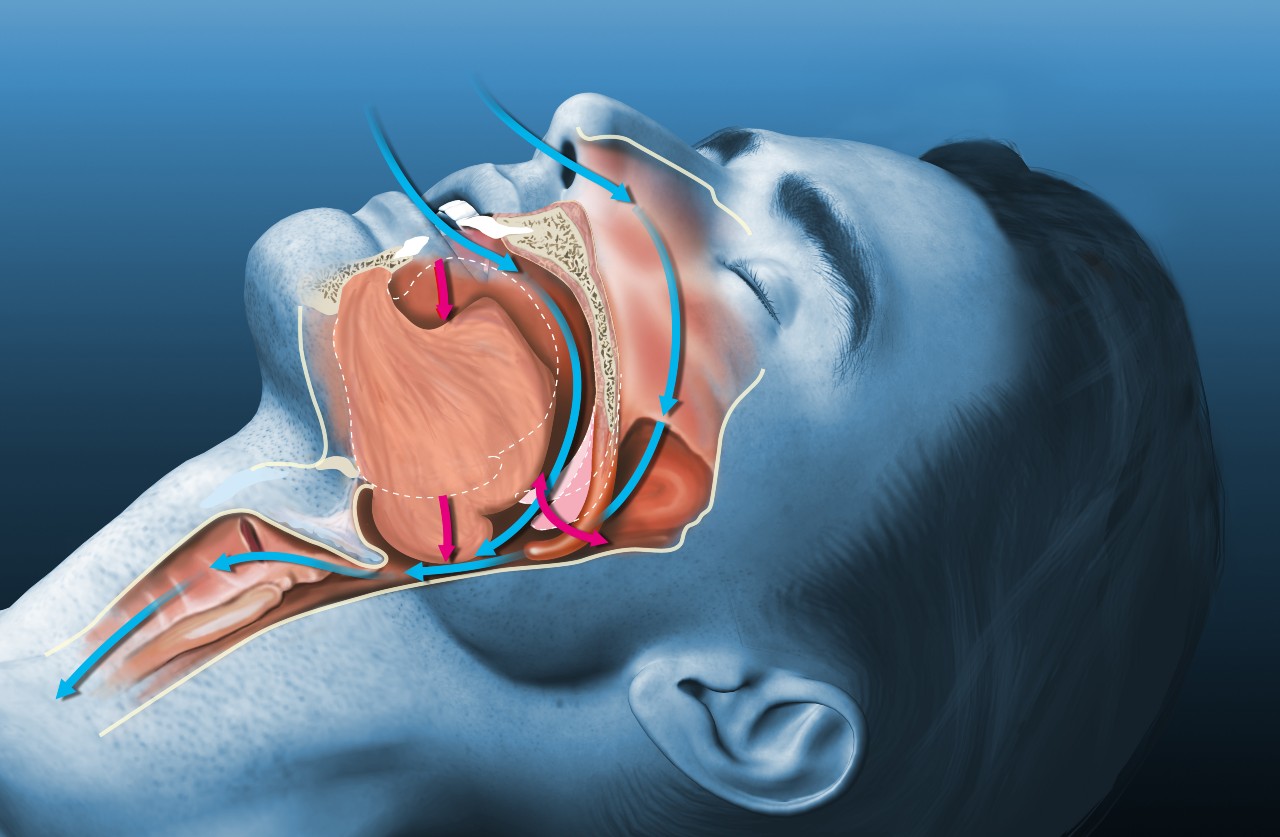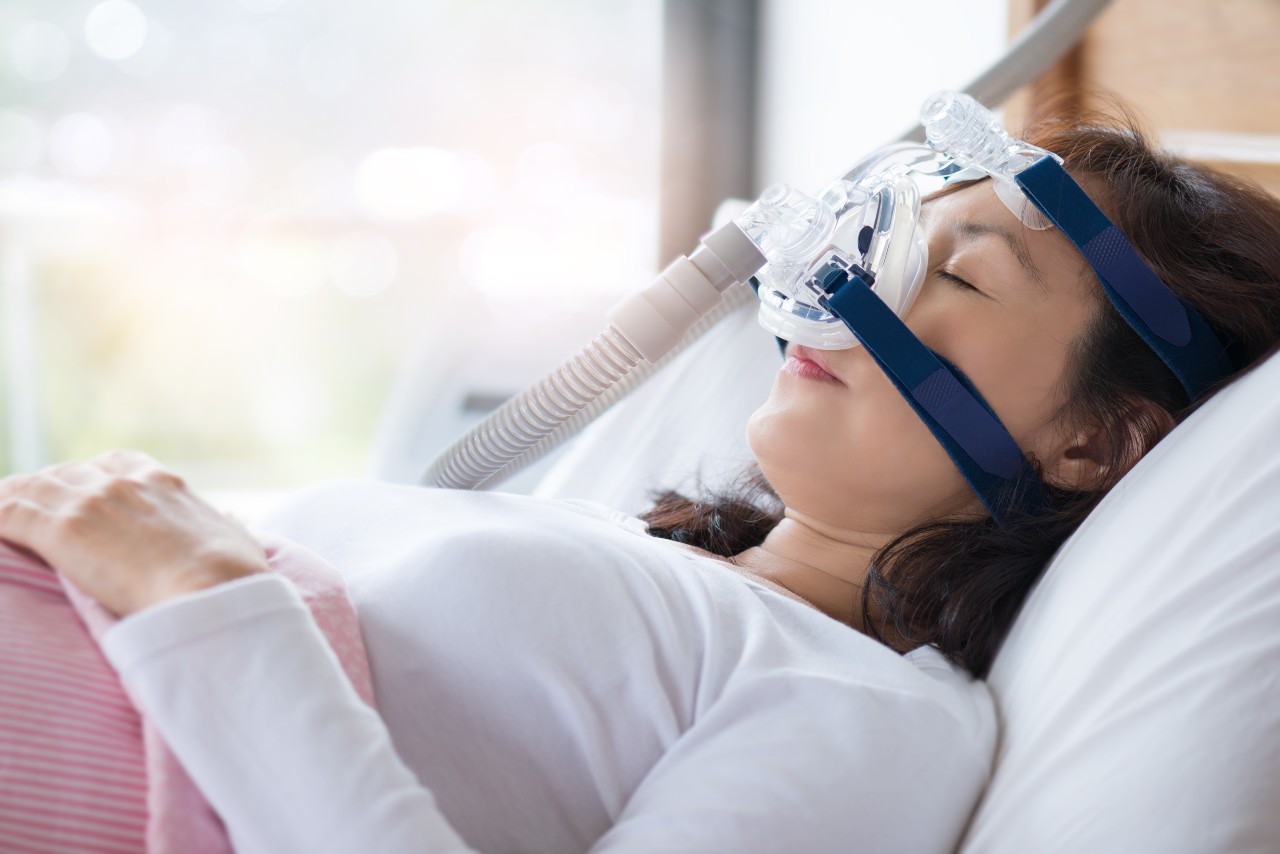
What is Obstructive Sleep Apnea? (OSA)
Obstructive sleep apnea is a sleep-related breathing disorder that involves the cessation or a significant decrease in airflow despite the presence of breathing effort. Sleep-related breathing disorders are a continuum ranging from simple snoring to upper airway resistance syndrome, and lastly, obstructive sleep apnea. OSA is the most common type of sleep breathing disorder and is characterized by recurrent episodes of upper airway collapse during sleep.
With OSA, the airway repeatedly becomes completely or partially blocked. This limits the amount of air that reaches the lungs and causes snoring, irregular breathing patterns, choking noises, and/or multiple arousals from sleep due to a severe decrease in oxygen flow. In severe cases, this can cause arousals several hundred times a night. Individuals may be completely unaware of experiencing these episodes while sleeping. If untreated, OSA may lead to many health problems including high blood pressure, heart attack, stroke, and heart disease.
Get a FREE Risk Assessment Today!

Who is at risk?
OSA is becoming increasingly common in today’s modern society. Currently, it is estimated that nearly 30 million U.S. adults have obstructive sleep apnea (OSA). To make matters worse, about 23.5 million of people with OSA are undiagnosed. That means that only a small fraction of people with OSA are actually getting the treatment they need.
There are a variety of factors that can increase an individual’s risk of developing sleep apnea. These include:
- Age: Adults over the age of 40 are at an elevated risk.
- Obesity: The Sleep Foundation notes that a 10% increase in weight increases the risk of OSA by six times.
- Anatomy: The size and position of various anatomical structures can increase the risk of developing sleep apnea. These structures include the neck, jaw, tongue, tonsils, and other tissues towards the back of the throat.
- Genetics: Individuals who have a close family member with sleep apnea are at an elevated risk of developing OSA themselves.
- Smoking: People who smoke are more likely to develop sleep apnea.
- Sedative Use: People who use sedatives, including alcohol, are more likely to develop sleep apnea because sedatives relax the airway muscles.
- Sleeping position: People who sleep on their back are at a higher risk of OSA
- Chronic nasal congestion and blockages: People with chronic nasal congestion or blockages are at an elevated risk of developing OSA.

Signs & Symptoms of Sleep Apnea
- Snoring
- Insomnia with difficulty falling asleep and staying asleep
- Frequent night time awakenings/fragmented sleep
- Sudden awakening choking or gasping during sleep
- Witnessed apnea by a bed partner
- Excessive daytime sleepiness
- Daytime fatigue/tiredness
- Restless sleep
- Cognitive deficits, difficulty with short term memory and concentration
- Nonrestorative sleep/unrefreshing sleep
- Irritability or moodiness
- Waking up with a headache and/or morning headaches
- GERD/heartburn
- High blood pressure
- Dry Mouth
- Sore throat (especially in the morning)
- Frequently waking up to urinate
- Decreased sexual desire

Health Risks of Sleep Apnea
Obstructive sleep apnea causes sleep deprivation and an interruption of the body’s oxygen balance. Sleep impacts every aspect of our lives including overall health, performance, safety, and quality of life. In addition to feeling tired, untreated obstructive sleep apnea is related to increased morbidity and mortality. Obstructive sleep apnea can lead to a variety of health risks if not properly treated, such as:
- Increased risk of cardiovascular disease
- HTN (hypertension/high blood pressure)
- Congestive heart failure
- Atherosclerosis
- Heart arrhythmia
- Heart attack
- Stroke
- Pulmonary hypertension
- Metabolic syndrome
- Diabetes
- Insulin resistance
- Weight gain and difficulty losing weight
- Obesity
- Neurologic disorders
- Impaired cognitive function
- Brain fog
- Dementia
- Headaches
- GERD / acid reflux
- Impaired mental health – anxiety, depression, irritability, moodiness
- Sexual dysfunction
- Poor immune function
- Stress and anxiety
- Insomnia
- Hormone imbalances
- Safety issues and accidents

Treatments for Sleep Apnea
-
CPAP (Continuous Positive Airway Pressure)-The most common and effective treatment for sleep apnea is continuous positive airway pressure (CPAP). CPAP uses gentle air pressure through a mask placed over your nose or mouth to keep your throat open while you sleep. The goal of this treatment is not just to alleviate symptoms but also to improve your quality of life.
-
Oral Appliances – Oral appliances may also be used to reposition the jaw and tongue in order to open up the airway and promote proper airflow.
-
Lifestyle Modifications – Lifestyle modifications, such as losing weight with diet and exercise, and avoiding sleeping pills or alcohol, can also help reduce symptoms associated with sleep apnea.
-
Positional sleep techniques – Sleeping on your side instead of sleeping on your back.
-
Nerve Stimulators – Implanted hypoglossal nerve stimulator
-
Surgical Procedures



